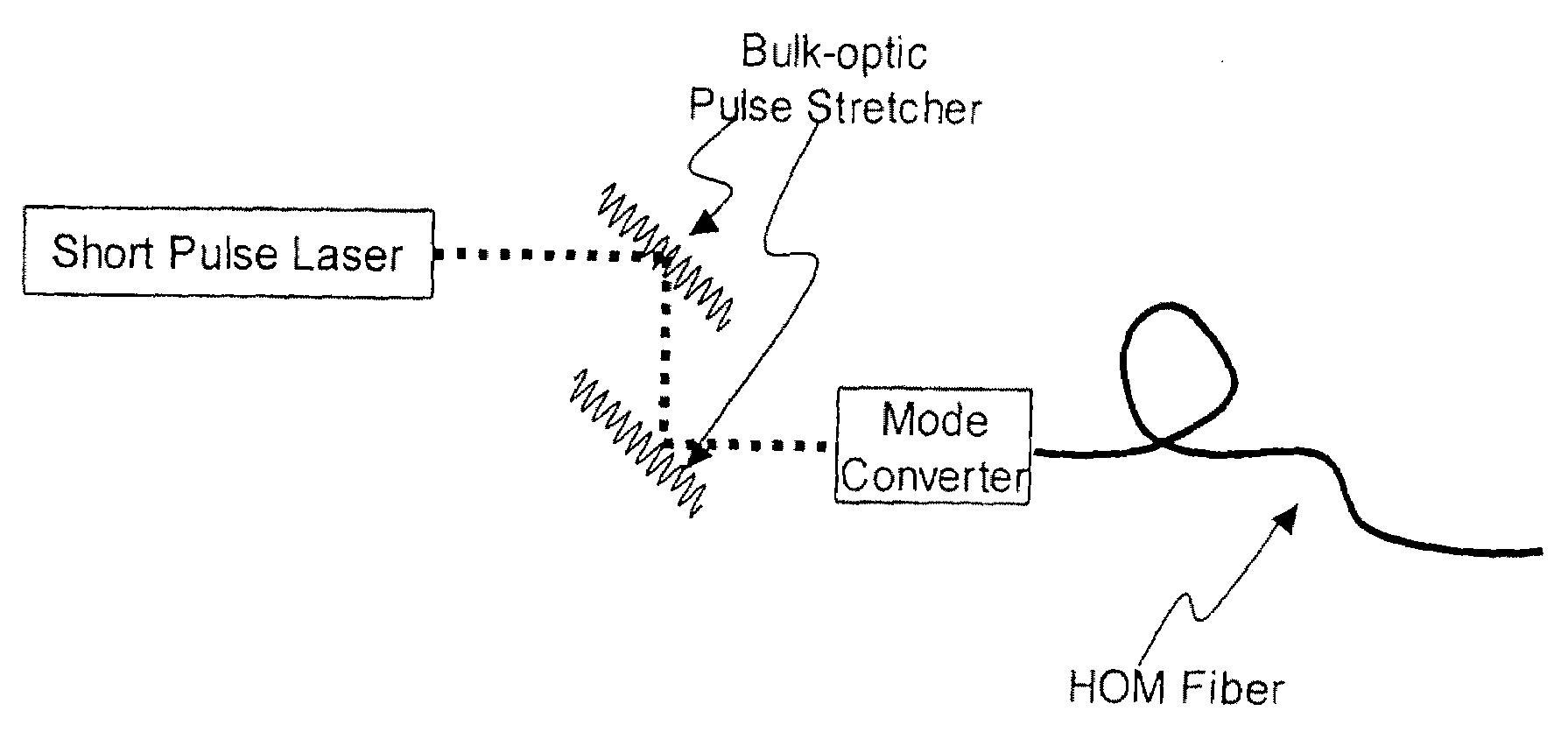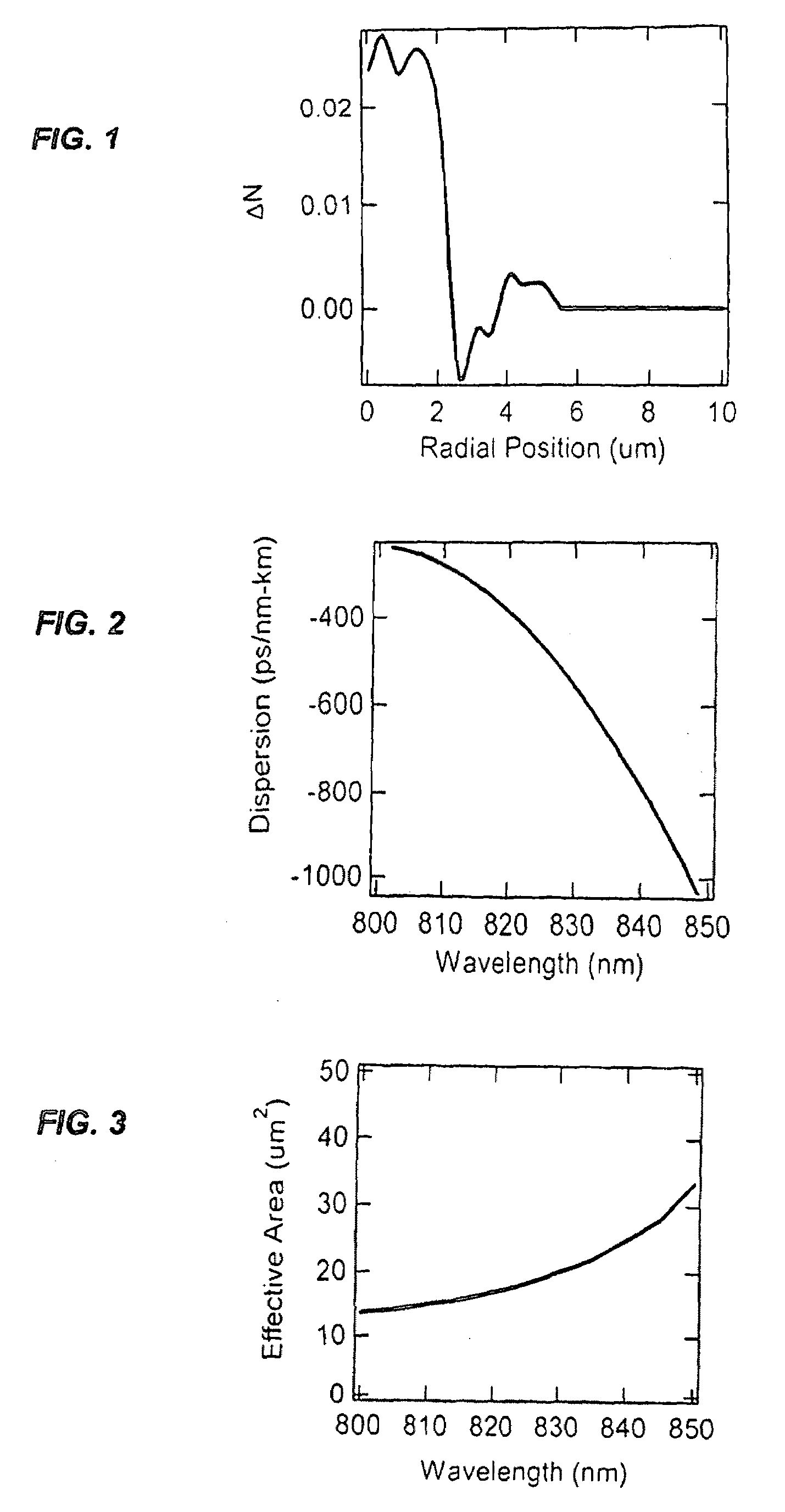Optical fiber systems for delivering short high power pulses
a technology of optical fiber and pulses, applied in the field of optical fiber systems, can solve the problems of inability to achieve inefficient multi-photo process, and inability to increase the average power of the source, so as to reduce the deleterious effects of nonlinear spm, low propagation and bend losses, and low pmd
- Summary
- Abstract
- Description
- Claims
- Application Information
AI Technical Summary
Benefits of technology
Problems solved by technology
Method used
Image
Examples
Embodiment Construction
[0027]The relative magnitudes of dispersive and nonlinear effects in fibers used for short pulse propagation are succinctly described by two characteristic lengths, the dispersion length LD, and the nonlinear length LNL, given by:
LD=(τ2D)·(-2πcλ2)LNL=cAeffn2ωPpeak(1)
where τ is the undistorted pulse width, β2 is the dispersion of the fiber waveguide, c is the speed of light, ω is the central frequency of the pulse, n2 is the nonlinear response of the fiber material, Ppeak is the peak power of the pulse in the fiber, Aeff is its effective area, and □ is the central wavelength of the pulse. These characteristic lengths describe the maximum distance a pulse can travel before it becomes significantly distorted by the corresponding impairment. Since dispersion can be easily compensated but SPM cannot, it is desirable to design a fiber such that LD is as small as possible in comparison to LNL. In this case, a highly chirped pulse can be launched into a fiber so that it is compressed as it ...
PUM
 Login to View More
Login to View More Abstract
Description
Claims
Application Information
 Login to View More
Login to View More - R&D
- Intellectual Property
- Life Sciences
- Materials
- Tech Scout
- Unparalleled Data Quality
- Higher Quality Content
- 60% Fewer Hallucinations
Browse by: Latest US Patents, China's latest patents, Technical Efficacy Thesaurus, Application Domain, Technology Topic, Popular Technical Reports.
© 2025 PatSnap. All rights reserved.Legal|Privacy policy|Modern Slavery Act Transparency Statement|Sitemap|About US| Contact US: help@patsnap.com



